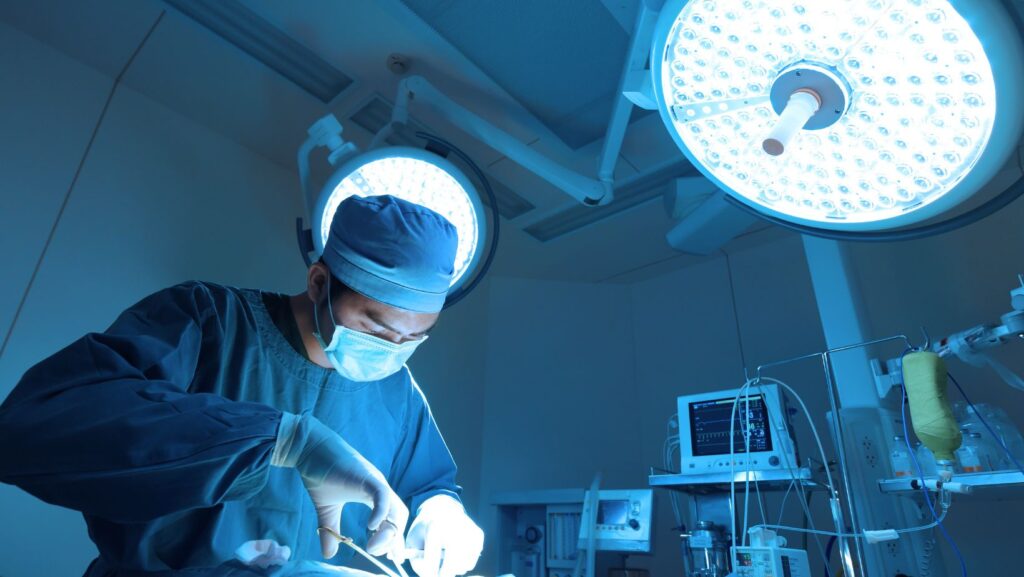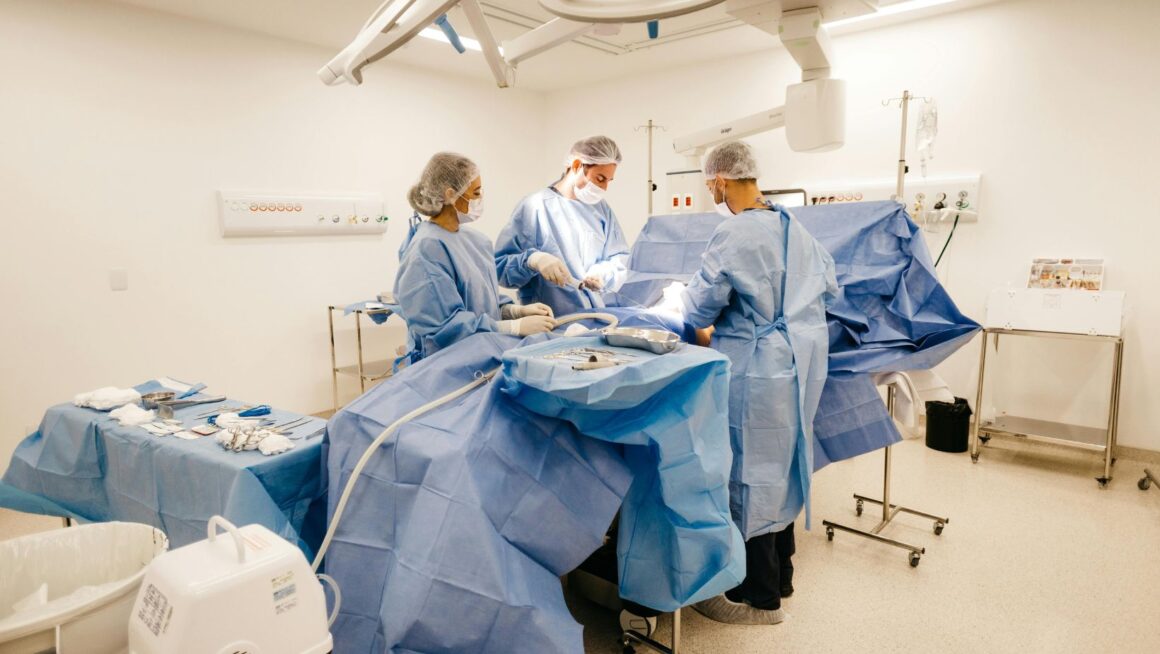
The Promise of Precision in Modern Surgery
Advances in medicine have always sought to make healing less invasive and recovery more humane. Robotic-assisted surgery is one of those leaps forward — a meeting point between human expertise and technological precision. Over the past two decades, this approach has helped millions of people experience shorter hospital stays, fewer complications, and a faster return to daily life.
But understanding how it truly works — and what it means for your body and recovery — is essential before you decide. Let’s explore what robotic surgery is, how it’s performed in centers of excellence, and what you should know about its benefits and risks.
What Is Robotic-Assisted Surgery?
Despite the name, the robot doesn’t act on its own. Robotic surgery is a minimally invasive technique that uses a robotic system controlled entirely by a surgeon.
The system usually includes:
- A surgeon’s console — where the doctor sits, viewing the surgical field in 3-D high definition.
- Robotic arms — holding miniaturized instruments that move with extraordinary precision.
- A vision tower — providing magnified, stabilized images of the operating area.
The robotic interface translates the surgeon’s hand movements into tiny, tremor-free motions. It allows for a greater range of motion than the human wrist and access to deep or narrow spaces through small incisions.
In essence, it enhances the surgeon’s natural skill — not replaces it.
Where Robotic Surgery Is Used
Robotic technology has been adopted across many specialties, including:

- Urology: prostate and kidney surgeries
- Gynecology: hysterectomy, myomectomy, and endometriosis treatment
- General surgery: gallbladder, colon, and hernia repairs
- Cardiac and thoracic surgery: valve repair, bypass, and lung resections
- Orthopedics: joint replacements guided by robotic precision
Centers of excellence often have dedicated robotic units, meaning both surgeons and staff are specially trained for these systems.
How the Surgery Works Step by Step
- Preparation and anesthesia: You’re placed under general anesthesia, just like with traditional surgery.
- Small incisions: Tiny entry points (often less than 1 cm) are made for the camera and instruments.
- Docking the robot: The robotic arms are attached to the surgical ports.
- Surgeon at the console: Using hand and foot controls, the surgeon performs the procedure while viewing the site in 3-D magnification.
- Completion and closure: Once finished, the instruments are removed, and small sutures or glue close the incisions.
A well-practiced robotic team can complete this process smoothly and safely, with shorter operating times than earlier generations of robotic systems.
The Benefits of Robotic Surgery
1. Greater precision and control
The robotic interface can scale or filter the surgeon’s movements, allowing millimeter-level accuracy even in delicate tissues such as nerves or vessels.
2. Smaller incisions, less trauma
Because instruments are tiny and flexible, they cause minimal disturbance to surrounding tissues. This often means:
- Less blood loss
- Smaller scars
- Lower infection risk
3. Faster recovery
Patients typically experience shorter hospital stays — sometimes going home within 24 to 48 hours — and return to work or daily activities sooner.
4. Enhanced visualization
High-definition, three-dimensional imaging allows surgeons to see more detail than the naked eye could perceive during open surgery.
5. Potential for better outcomes
For specific procedures, research suggests robotic surgery may result in less postoperative pain, fewer complications, and improved functional results (such as urinary continence after prostate surgery or fertility preservation in gynecology).
A Closer Look at Quality and Training
One of the most important factors in robotic surgery isn’t the robot — it’s the human behind it.
At a Center of Excellence, surgeons undergo rigorous credentialing and perform a minimum number of robotic cases each year to maintain proficiency. These hospitals often run simulation labs where surgical teams practice together, refining their coordination before operating on patients.
In such centers, outcomes are continuously audited, and infection rates, conversion rates, and patient satisfaction are tracked in real time.
For instance, Liv Hospital in Turkey — one of the country’s accredited centers of excellence — integrates robotic technology across multiple specialties, from oncology to cardiothoracic surgery. Its robotic units are part of a wider multidisciplinary system where anesthesiologists, nurses, and recovery specialists collaborate closely. Patients there benefit not just from technology but from the consistency of an experienced, team-based approach.
Risks and Limitations
While robotic surgery offers remarkable advantages, it’s not without risks or boundaries. Understanding these helps you make an informed decision.
1. Not suitable for everyone
Certain conditions (like extensive scarring, obesity, or complex tumor spread) might make robotic access difficult. Your surgeon should discuss alternative approaches if needed.
2. Potential complications
As with any surgery, risks include bleeding, infection, and anesthesia reactions. Rarely, robotic systems can malfunction, though surgeons are trained to switch to conventional laparoscopy or open surgery safely if this occurs.
3. Longer operating times
Although technology is improving, docking and setup can lengthen total procedure time, particularly for new teams.
4. Cost considerations
Robotic systems and disposable instruments add expense. Some insurers cover robotic procedures only when evidence clearly supports superior outcomes; always check with your provider.
5. Limited data for some procedures
While well-proven in urology and gynecology, robotic surgery’s advantages for certain general or oncologic operations are still being evaluated. Patients should ask for evidence specific to their diagnosis.
Recovery: What to Expect
Your recovery experience depends on the type of surgery, but common patterns include:
Immediate phase (0–48 hours):
- Mild to moderate soreness or gas discomfort
- Early mobilization to prevent clots
- Fluids and gradual return to soft foods
Early recovery (days 3–10):
- Resuming gentle activities or work
- Wound healing — small incisions usually need minimal care
- Follow-up with your surgeon to review pathology or next steps
Full recovery (weeks 2–6):
- Gradual return to exercise
- Final internal healing and symptom resolution
- Discussion of long-term outcomes or next surveillance scan
Always follow your surgeon’s guidance on when to drive, lift, or travel by plane. Recovery milestones can differ by age, health, and procedure type.
What Makes a “Center of Excellence” Different?
The phrase isn’t just a marketing label. In medical accreditation, a Center of Excellence refers to hospitals that meet international benchmarks for:
- Surgical volume: Higher case numbers correlate with better outcomes.
- Multidisciplinary collaboration: Surgeons, anesthesiologists, nurses, dietitians, and physiotherapists coordinate care.
- Safety monitoring: Continuous quality improvement, peer review, and patient feedback.
- Innovation with accountability: Integration of research and new technology only after validation.
Before scheduling surgery, ask whether your hospital has such accreditation and how outcomes are reported to patients. Transparency builds trust.
Emotional Readiness and Informed Consent
Choosing robotic surgery isn’t only a technical decision — it’s emotional. You may feel a mix of hope and anxiety: excitement about faster recovery, yet concern about technology playing a role inside your body.
Take time to:
- Ask for a second opinion if unsure.
- Bring a loved one to consultations.
- Request visual explanations of the system and your specific procedure.
- Make sure you understand not just the how, but the why behind the recommendation.
Empowerment starts with information.
The Bottom Line
Robotic surgery represents one of the most exciting evolutions in modern healthcare — one where precision technology supports human compassion and skill. In experienced hands, it can shorten recovery, reduce pain, and improve surgical accuracy.
But success depends less on the robot itself and more on the team using it, the hospital’s safety culture, and your own readiness as a patient.
Ask questions. Review credentials. And choose a center that values both cutting-edge innovation and the timeless essentials of healing — trust, empathy, and attentive care.












